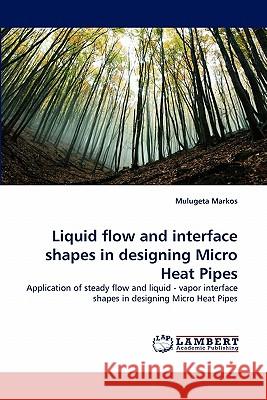Liquid Flow and Interface Shapes in Designing Micro Heat Pipes » książka
Liquid Flow and Interface Shapes in Designing Micro Heat Pipes
ISBN-13: 9783843362184 / Angielski / Miękka / 2010 / 112 str.
The design of efficient Micro heat Pipes requires efficient heat transport capability. In this work steady-liquid flow and heat transfer in a micro heat pipe with triangular, rectangular and advanced capillary shaped grooves have been closely examined, to study the maximum heat transport capability of cooling devices such as micro heat pipes. A lubrication-type model of liquid flow and heat transfer under negligible gravity and small capillary number is considered. The adiabatic region plays an important role in determining the flow rate. The flow rate could be controlled by changing the shape of the cross-section. Heat transport capability of different groove structures is compared. The comparison has significant contribution in selecting the best groove structure for designing and improving performances of micro heat pipes. Practical applications of the results are discussed in relation to the design and optimization of micro heat pipes.
The design of efficient Micro heat Pipes requires efficient heat transport capability. In this work steady-liquid flow and heat transfer in a micro heat pipe with triangular, rectangular and advanced capillary shaped grooves have been closely examined, to study the maximum heat transport capability of cooling devices such as micro heat pipes. A lubrication-type model of liquid flow and heat transfer under negligible gravity and small capillary number is considered. The adiabatic region plays an important role in determining the flow rate. The flow rate could be controlled by changing the shape of the cross-section. Heat transport capability of different groove structures is compared. The comparison has significant contribution in selecting the best groove structure for designing and improving performances of micro heat pipes. Practical applications of the results are discussed in relation to the design and optimization of micro heat pipes.











